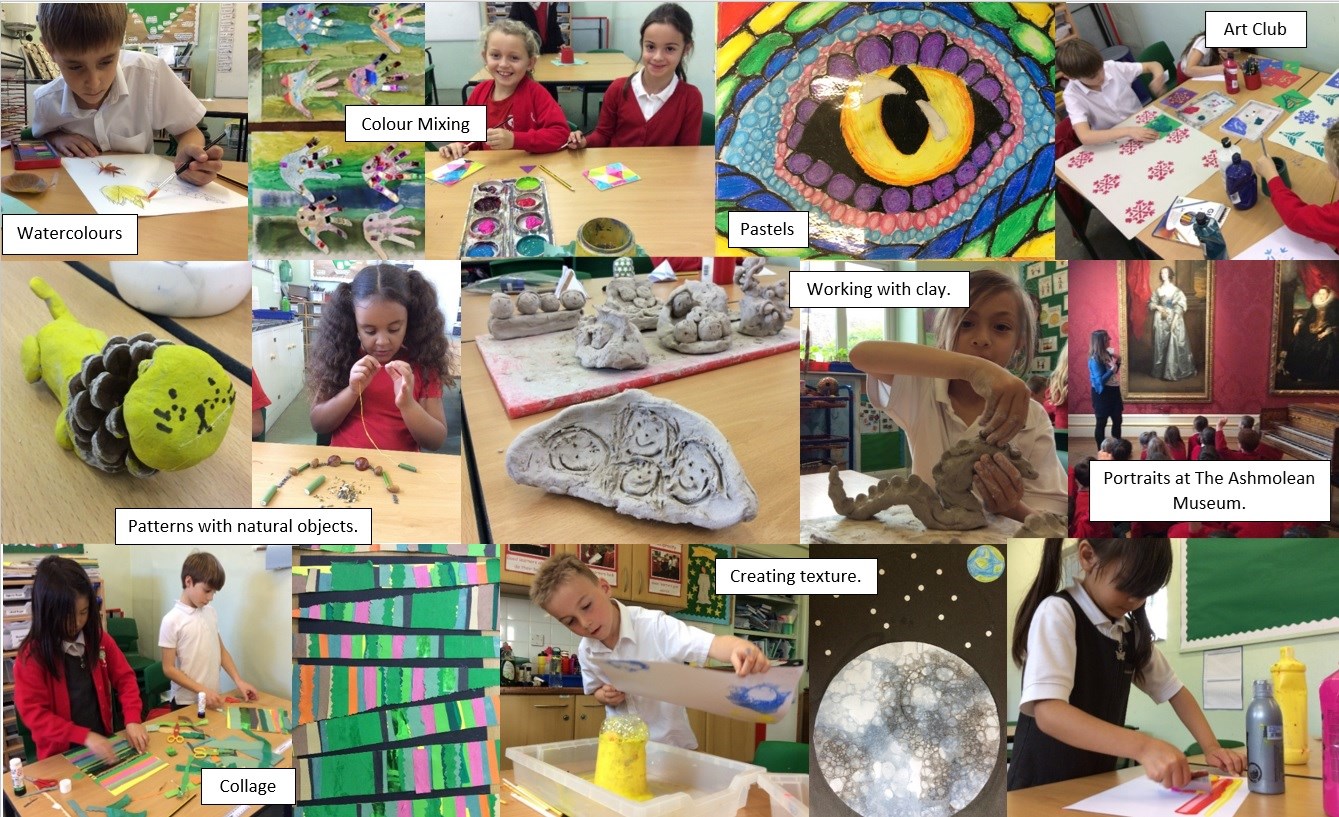Art
Intent
At Launton CE Primary School, we value Art and Design as an important part of the children’s entitlement to a broad and balanced curriculum. Art and Design provides children with the opportunities to develop and extend skills and an opportunity to express their individual interests, thought and ideas.
A high-quality art and design education should engage, inspire and challenge pupils, equipping them with the knowledge and skills to experiment, invent and create their own works of art, craft and design. As pupils progress, they should be able to think critically and develop a more rigorous understanding of art and design. They should also know how art and design both reflect and shape our history, and contribute to the culture, creativity and wealth of our nation.
Aims
The national curriculum for art and design aims to ensure that all pupils:
- Produce creative work, exploring their ideas and recording their experiences
- Become proficient in drawing, painting, sculpture and other art, craft and design techniques
- Evaluate and analyse creative works using the language of art, craft and design
- Know about great artists, craft makers and designers, and understand the historical and cultural development of their art forms.
Implementation
Our art and design curriculum is a key aspect at Launton CE Primary, not only through art lessons but through cross curricular links. The art curriculum has been designed to ensure that children get an immersive creative education; the artists and makers we study are from all parts of the world; include both powerful male and female artists for the children to feel inspired by; and additionally historical and contemporary practitioners.
There are a wealth of mediums that the children are introduced to across year 3 to 6, and familiar mediums that the children need to practise and improve upon. We have a skills and progression document that carefully and clearly provides learning objectives for class teacher to utilise to ensure that children gain the skills and knowledge that they require in that given year.
We measure the impact of our curriculum through the following methods:
Impact

Statutory Framework for Early Years (Updated 2021)
Art, craft and design embody some of the highest forms of human creativity. A high-quality art and design education should engage, inspire and challenge pupils, equipping them with the knowledge and skills to experiment, invent and create their own works of art, craft and design. As pupils progress, they should be able to think critically and develop a more rigorous understanding of art and design. They should also know how art and design both reflect and shape our history, and contribute to the culture, creativity and wealth of our nation.
The development of children’s artistic and cultural awareness supports their imagination and creativity. It is important that children have regular opportunities to engage with the arts, enabling them to explore and play with a wide range of media and materials. The quality and variety of what children see, hear and participate in is crucial for developing their understanding, self-expression, vocabulary and ability to communicate through the arts. The frequency, repetition and depth of their experiences are fundamental to their progress in interpreting and appreciating what they hear, respond to and observe.
EYFS Outcomes
Children at the expected level of development will:
Safely use and explore a variety of materials, tools and techniques, experimenting with colour, design, texture, form and function;
Share their creations, explaining the process they have used;
Make use of props and materials when role playing characters in narratives
and stories.
KS1 Outcomes
Pupils should be taught:
to use a range of materials creatively to design and make products
to use drawing, painting and sculpture to develop and share their ideas, experiences and imagination
to develop a wide range of art and design techniques in using colour, pattern, texture,
line, shape, form and space about the work of a range of artists, craft makers and designers, describing the differences and similarities between different practices and disciplines, and making
links to their own work
KS2 Outcomes
Pupils should be taught to develop their techniques, including their control and their use of materials, with creativity, experimentation and an increasing awareness of different kinds of art, craft and design.
Pupils should be taught:
to create sketch books to record their observations and use them to review and revisit ideas
to improve their mastery of art and design techniques, including drawing, painting and sculpture with a range of materials [for example, pencil, charcoal, paint, clay]
about great artists, architects and designers in history


